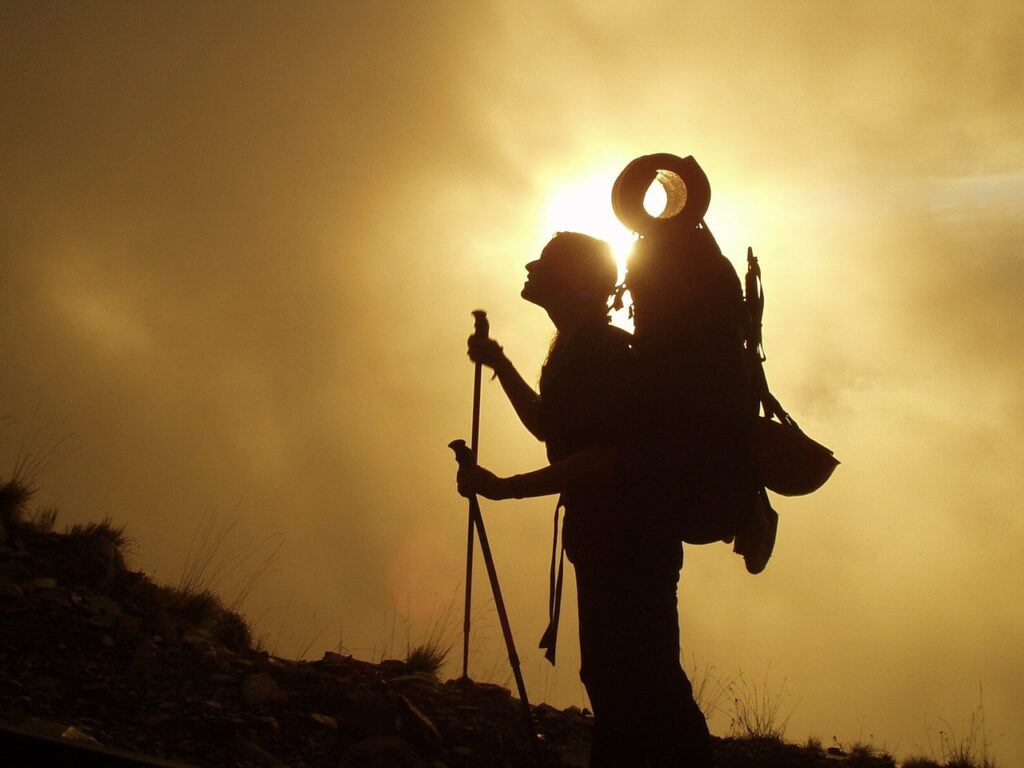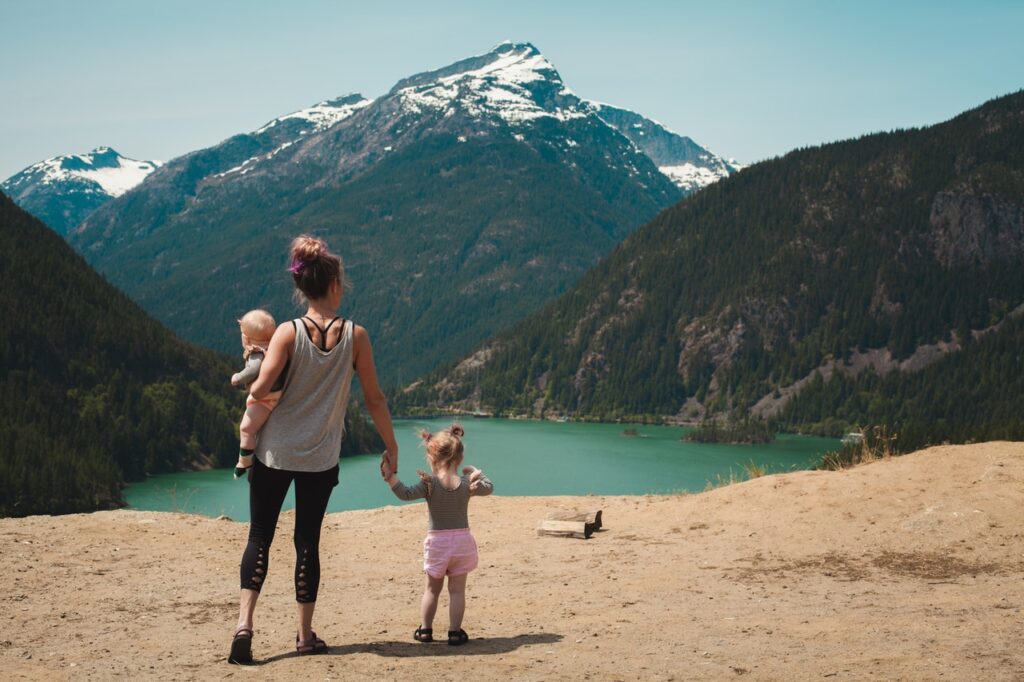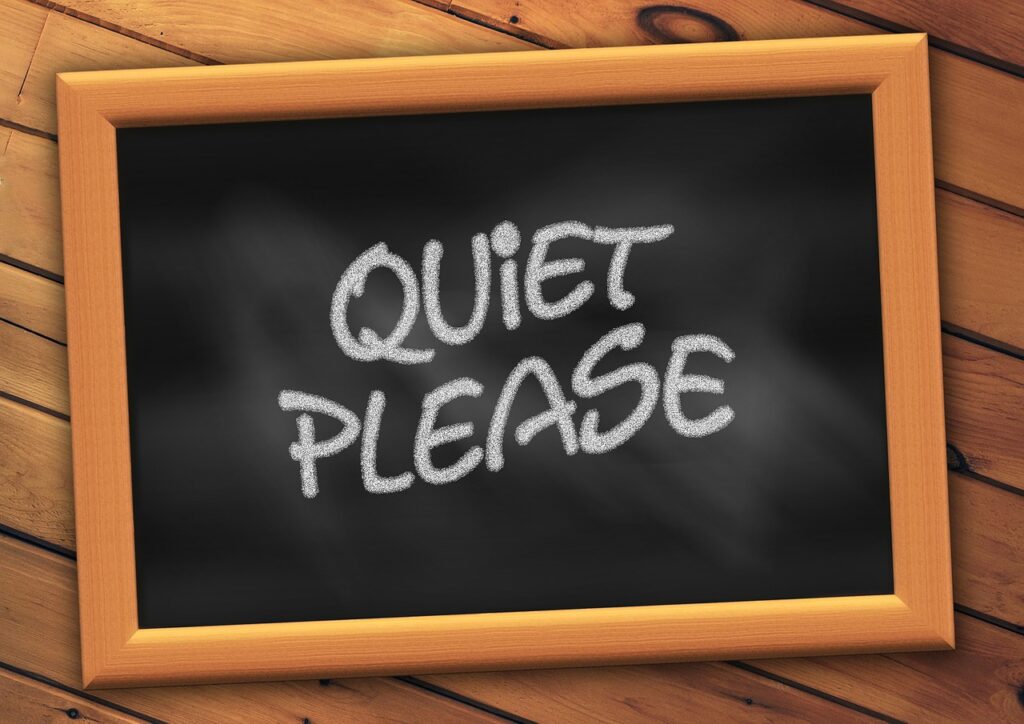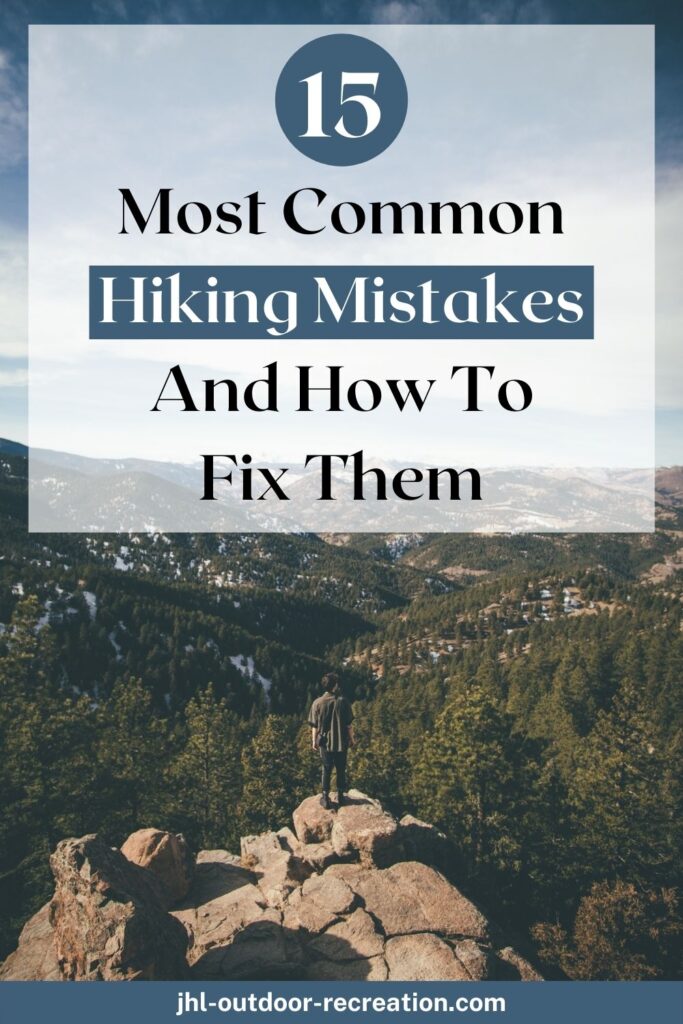I love hiking so much. But, I have to admit that I’m not the best hiker out there. That’s because I made A LOT OF hiking mistakes since my first hike.
Hence, I was very self-conscious. Thus, I observed other hikers whenever I went for hiking. Well, I didn’t want to embarrass myself for making stupid hiking mistakes.
It turns out that I am not alone. I could see some of them making mistakes when hiking, too.
Ok. So, what is the point to know these hiking mistakes? As long as we love hiking and we are FREE to do whatever we want, who cares about these mistakes?
The truth is, mistakes are UNPLEASANT. Not only do they impact us negatively, but also other hikers and our Mother Nature.
That is the point of knowing hiking mistakes! It doesn’t matter whether we are beginners or experienced hikers, we can make mistakes unknowingly.
Well, definitely we want to fix them so that we avoid these hiking mistakes whenever we go for a hike!
So, let’s talk about the top 15 most common hiking mistakes and how we can fix them.
1. Clueless about the hike
My first hike was a disaster. It was a dawn hike, but I didn’t bring a headlamp! – I was naïve and clueless.
Before we started the hike, I sheepishly told the leader and the rest about this. Luckily, they were friendly and didn’t bother too much. But, I had to follow them closely as I needed to rely on their headlamps.
Huge mistake. Don’t be clueless about the hike!
Sometimes, when our friends ask us to go for a hike, we are so excited and accept it right away. But, we don’t ask further.
We expect everything is in place as we are not the one who do the research and planning. In other words, we are CLUELESS about the hike!
Well, things don’t always go with the flow. We forget to bring necessary hiking gear; we are late for the meet up. So, we create hassle to the rest……
How to fix this
Clueless about the hike is awful.
Let’s say you are not the planner, at least get the basic details from the planner. These include:
- Expected hiking duration
- Location of the hike
- Logistics arrangement
- Number of hikers
- Time and location for meet up
- Advice on specific hiking gear (if any)
For solo hiking or planning for group hike, you need to do proper research and plan for your trip. Otherwise, you can be in danger, as everything can happen when hiking.
So, you need to consider these when planning for a hike:
- Trail condition
- Expected hiking duration
- Weather
- Possibility of wild animals
- Permit (if required)
- Logistics arrangement
- Budget
I have written a detailed post on research and planning for hiking. You can check that out for details.
FYI, getting to know about your hike is also crucial for packing and navigation. And we will cover both below.
2. Overpack / underpack

There are 2 extreme types of hikers out there.
First one is the “What-if hikers”. They could think of any possible situations whenever they go for a hike. “What if I need to stay in the forest?” “What if I am bored and have nothing to do?”
So, they bring excess items, such as books, drone, stove, foldable chair, even for a short day hike!
Literally, they pack everything under the sun. Ok, they prepare for the worst. But, look at the size of their backpack. It’s like a giant rock!
The other spectrum is the “Who-cares hikers”. They are obsessed with “packing light” when hiking. So, they tend to avoid packing whenever they could. – Cause weight matters as it impacts the pace of hiking.
Some of them might go to the extreme. They might not bring any essential/safety hiking gears, at all! – Not even a backpack or daypack.
Whenever they need certain hiking gears, they are in trouble.
These are the typical examples of OVERPACKING and UNDERPACKING for any hikes. Clearly, both have their pros and cons.
How to fix this
Strike a balance when packing. We want to pack as light as we can, as we don’t want our backpack to be our burden.
But, we cannot compromise essential hiking gears that are for our safety.
So, we need to differentiate ESSENTIAL and NON-ESSENTIAL hiking gears. Some of the essential hiking gears include:
- Backpack / daypack
- Hiking shoes
- Water bottle / bladder
- First aid kit and safety items
- Navigation tool
The above are no exception for any hikes. Unless you are in a group hike, you MAY not need to bring first aid kit and navigation tool only IF other members have these.
Then, consider non-essential hiking gears based on the types and conditions of the hike.
After packing, try to wear on your back to test the weight. Re-pack if necessary.
I have written a post for day hike gears. So, you can check it out for better understanding.
3. Eat the wrong way
Hiking is a long-hour, strenuous workout. Hence, we need a lot of energy to hike. Some hikers might have a full meal before hiking to make sure they have enough energy.
It doesn’t work that way, though. They get dizziness and nausea.
Or, some hikers know this quite well. So, they refuse to eat anything before any hikes. But, it is not a good idea, either.
It turns out that they get tired and hungry easily. If they continue to hike with empty stomach, they might feel dizziness. Plus, this drags their pace as well.
Is there any hiker who makes both these mistakes when hiking? Yes! I’m THAT hiker. That’s why I’m telling you these suck!
How to fix this
Again, strike a balance. Have a light meal before any hikes is all we need.
Google search the types of food for hiking. Banana, avocado, oat, for instance. Personally, I like to eat oatmeal as I always hike in the morning.
If otherwise, avoid heavy meal at least 2 hours before the hike.
We always feel sleepy after having a heavy meal, let alone having a strenuous hike. That is the recipe of inviting trouble.
4. Not letting others know about your hike
We think it is totally safe when hiking in a group. So, we happily join the group without letting other people know our whereabouts.
Nobody knows we go for a hike. So, when someone calls us during the hike and can’t reach us, he / she might worry.
In contrast, if anything happens during the hike and we couldn’t go back on time, they aren’t aware of it.
How to fix this
Let others know about your hike.
They could be your family members, friends, roommates, or colleagues. Let them know the date, location, and the expected time to finish the hike.
Just give them a call, or message, or casual chat to inform them. This shouldn’t take a lot of effort.
Ok, why not “spread” on social media, so everyone knows you are going to hike?
But the thing is, you are also “telling” people that you are NOT at home. This could invite “unwanted guess” to your house during that time. – Think twice before you spread this on social media.
5. Improper clothing and footwear

There is a fun quest for you. When you meet any hikers, try to ask them whether it is ok to wear cotton for hiking.
I’m pretty sure they will tell you “No cotton for hiking”.
You can guess this. Cotton absorbs sweat and is slow in drying. So, it traps our sweat and makes the clothes heavier.
Plus, bacteria breed on it. That’s why we can be really smelly while wearing cotton clothing.
That is not the end of it. In fact, wearing sneakers or sandal is also a big No No for hiking. Yet, they are terribly common. You can see many hikers wearing them when hiking.
We slip quite easily when wearing sneakers or sandals. The soles cannot prevent us from slipping.
But, I’m guilty to let you know that I wore sneakers for hiking, too!
That’s why I know how terrible it is. And I learned the mistake.
How to fix this
Understand the purpose of having proper clothing and footwear.
Firstly, you definitely need to avoid wearing cotton clothes for hiking.
Luckily, any sportswear with synthetic material, like polyester or nylon, is good for hiking. They are good in drying.
Secondly, wear either hiking boots or trail runners when hiking. Spend some time to look for proper hiking footwear.
Trust me. You won’t regret it. In fact, you refuse to wear sneakers or sandals anymore once you get the proper hiking footwear.
6. Too ambitious
We were once beginners. When we have a chance to go for hiking, we are excited. We join without hesitation. Yet, we don’t know the difficulty.
We start to fantasize that we conquer our first-ever hike.
In fact, this is a trap. The difficulty is too much for us to handle. We can’t maintain the pace and drag the pace of the group. We might want to give up in the middle of the hike……
Or, we could be planning for a backpacking trip. It is a 3-day trip with the length of 80km, for instance.
So, we need to hike around 27km each day. And since a 30km long day hike is not a problem for us, we stick to that 3-day trip plan.
First day. “Yep, no problem, totally within my expectations”. Second day. “Not quite, I’m tired, but yeah, I still can make it”. Third day. “Horrendous. I can’t feel my legs”.
Regardless of our experience level, we are always too ambitious. We always have the perfect hike in our mind. But reality always shatters our expectations.
How to fix this
Lower our expectations. Get to know our limits.
Although it is perfectly fine for BEGINNERS to join any hikes, try to assess the hikes beforehand. You can check with the organizer on this. Or, do a quick research on this.
If it is a tough hike, don’t worry. You can still join the hike.
Depending on your fitness level, get some training before that. For example, try to walk more or use staircase whenever you can. This helps strengthen your thigh muscles, which helps you hike better.
For EXPERIENCED HIKERS who plan for long backpacking trip, remember to account for rest days, if possible. Take the example above. Try to make it as a 4-day hike, instead of 3-day hike.
There are 2 options for you:
- Extra day as rest day
- Spread the hike to reduce the daily mileage
This is extremely useful when you go for high-altitude trekking. You won’t want to strain your leg muscles too much. Plus, you need rest day to acclimatize to high altitude to reduce high-altitude symptoms.
7. No warming up
Sadly, we always forget to warm up before hiking.
Many hikers don’t even care. We know we need to warm up before any workouts. Hiking is a workout, too. So, we need to warm up before hiking.
But, even if we know this, we CHOOSE to ignore. We think this is redundant because we treat hiking as part of our warm-up session.
In the middle of the hike, we feel tightness in our leg muscles. We start to get out of breath and sweat excessively. We get tired faster. The next day, we can’t walk, sit or squat properly.
How to fix this
Do simple stretching before hiking.
Spend 5 to 10 minutes to stretch the whole body to improve blood circulation and muscular movement.
8. Not using bathroom before hiking

I have the tendency not to use the bathroom before hiking. When I reach the trailhead, I start hiking with my hiking mates, although I have mild urge to pee.
I think the urge will fade away once I start hiking. Instead, the urge gets stronger. So, I excuse myself to find a place to pee, leaving my mates out there to wait for me.
Having the urge to pee or poo is common when hiking. Imagine you need to poo in the middle of the hike. You will PANIC.
How to fix this
Well, it doesn’t mean you can totally avoid peeing or pooping during the hike. But, using the bathroom before any hikes can help.
Whenever you have the urge to use the bathroom before any hike, don’t ignore this. Use the bathroom and settle your business. – Otherwise, you might keep thinking / worrying about this and you can’t enjoy at all.
9. Don’t know how to navigate
Trail is always straight. And you just follow the trail. But, you wonder why there are some “ribbons” on the tree branches. Well, you don’t care and you just keep going.
Then, you reach a junction that can lead you to multiple directions. But, which junction should you take? Also, you have nothing to refer to.
You have no idea which one you should take. Instead, you let your intuition guide you and pick the best one. After a few moments, the trail “disappears”.
You notice something is wrong. So, you try to return but you can’t find your way back.
Ah shit! You are lost in the forest. By. Your. Self.
How to fix this
You need to know how to navigate. This is crucial to avoid the risk of getting lost in the forest. Also, if getting lost, you know how to save yourself.
That’s why we must research and plan for our hike. To help you navigate, consider any methods below:
- Compass and map
- Google map (offline mode)
- Outdoor adventure app
- GPS Smart watches
- Blog posts screenshot
Bear in mind that compass and map are the safest, as you don’t need electricity and GPS signal. So, if you know how to use a compass and map, this is a good advantage.
Blog posts screenshot, however, should only be a SUPPORTING navigation tool, as the details may no longer be relevant if there is any change on the trail.
Finally, understand the purpose of “ribbons” on the tree branches. These are TRAIL MARKERS, which guide you to the right direction. Apart from the ribbons, trail markers can be in other forms, such as:
- Signboards / posts
- Paint on the trees
- Flags on the branches or trees
- Ropes between the branches or trees
10. Take big steps when ascending
Have you ever paid attention to your footsteps when ascending?
Whether you notice or not, we naturally have BIG footsteps when hiking uphill. We think this is efficient to hike uphill.
Well, the truth is the opposite. Big footsteps when ascending drains our energy. We get tired quicker. Also, we get out of breath faster.
In fact, this is similar to cycling. When riding uphill, we use small gear. We only use big gear when riding downhill or on flat surface.
Ascending with big footsteps is the same as riding uphill with big gear. – That’s not efficient.
How to fix this
So, we need to change to “small” gear for hiking. That is, REDUCE our footsteps.
This can be a bit odd at the beginning. So, you need to take some time to be mindful on your footsteps. The good thing is, you can instantly get the results once you change to small footsteps.
You no longer catch your breath and you can keep going.
Or, you can learn POWER HIKING, a technique for trail running, to improve hiking efficiency.
To power hike, lean your body forward to shift your centre of gravity to the front. Place your hands on your thighs to act as support when ascending.
This way, you don’t rely on and strain your thighs muscle.
Or, use TREKKING POLES as the third method. Save time as you don’t need to learn these.
11. Compete with other hikers
Let’s admit it. We don’t want to be the LAST hiker. Period.
We don’t want to look unfit and drag the pace of the whole group. Even if we are the fast hikers, we might complain about the pace of the slow hikers in our mind.
This creates pointless race among hikers. Instead of enjoying the moment, we always tend to compete amongst ourselves in our mind when hiking.
We feel “proud” when we overtake others. Conversely, we are upset when others overtake us. So, we increase our pace to hike fast. – Although this might make us suffer.
How to fix this
We seriously need to let go of this toxic, silly mindset. Let it be, whether we are fast or slow hikers.
Hike at our pace. Or, slow down to enjoy and observe.
The purpose of hiking is not about competing. It’s about enjoying the beauty of our Mother Nature.
Or, if you encounter any slow hikers, learn to tolerate and respect their pace. Assure them it is totally fine to hike at their pace. They don’t have to adjust their pace to yours.
While waiting for them, stop to observe and enjoy the present moment.
12. No snacks or water

Confession. Sometimes, I forgot to bring snacks when I was packing for my day hikes. Maybe I put them as the last priority.
Also, I tended to bring less water as I thought I didn’t need to hydrate so much. – In fact, I hated the excess weight on my daypack.
Here was my karma. I could only watch my mates eating while I was starving. Also, I rationed drinking until the last drop of water.
Luckily, I have the best hiking mates ever. When they noticed, they shared their snacks and water with me.
I was so grateful yet embarrassed at the same time.
I hope you don’t be like me……
How to fix this
Treat snacks and water as essential hiking gears.
Snacks are light. So, it shouldn’t be an excuse not to include in your backpack.
Water is a bit tricky here. It depends on the length of the hikes. So, use your judgment.
However, if you are still unsure about water, it’s better to over-prepare than under-prepare. Yeah, it is slightly heavier, but you don’t have to deal with the mess of without water.
You need them in your backpack whenever you go for hiking.
13. Take dangerous aesthetic pictures or videos
Let’s face it. We want “Likes” and “Comments”. We crave for attention on social media because this makes us feel good. – Who doesn’t like that?
Imagine we are on the top of the mountain with the brilliant view. This is the perfect chance to grab attention on social media.
What do we do? We take stunning pictures or videos.
Some people take this to the extreme. They perform dangerous moves or stunts while taking pictures or videos, to hope that their pictures or videos would go viral.
Here’s a thing. They are risking their lives while craving for this virtual fame.
According to a study published by Journal of Family Medicine and Primary Care, there were 259 deaths while clicking selfies from October 2011 to November 2017. The main causes of death included drowning, transport and fall from heights.
You don’t want to be part of that, do you?
How to fix this
No stunt or dangerous moves while taking pictures or videos. Period.
Even if you want to sit on the edge of the cliff, you should also think twice. It isn’t safe, either.
A very simple pose is good enough to record the great moment. That is the real purpose of taking pictures or videos. – You don’t have to risk your life.
14. Hop when descending
The ascending mess is over. After taking a short break, now is our fun time!
Instead of hiking downhill slowly, we choose to hop like a Spiderman on the trail. At this moment, we feel like having superpower.
With the help of gravity, descending is much faster and more exciting.
Somehow, we are not aware of the repercussion. Hopping downhill without proper technique is disastrous for our knees and ankles.
Guess what? We might even have trouble in walking or using staircase when we grow older.
How to fix this
Unless you are a trail runner or you have superb agility, AVOID hopping as much as possible.
Just slow down and descend properly. Pay attention to your footsteps. Place your steps gently on the ground to reduce the impact on both knees and ankles.
If possible, try to use FOREFOOT STRIKE.
Or, you can use TREKKING POLES to support you when descending.
15. Not observing trail etiquette

Perhaps this is the Mother of all hiking mistakes. Trail etiquette is a broad term, which covers essential Dos and Don’ts when hiking.
For this purpose, the main hiking mistakes are littering and making noise.
When you are new to hiking, you will come across “Leave No Trace”. However, not all hikers observe this.
It’s saddening to see rubbish on the trails. The rubbish pollutes the trails and environment.
Or, you might also notice some hikers speak loudly or shout or blast music on the trails. Again, this is upsetting as they don’t realize these are disturbing.
Hikers love hiking because of the peace and silence. And, we don’t expect to watch a “concert” or listen to people argue on the trails.
How to fix this
Don’t litter. Simple as that. Don’t throw any plastic covers, water bottles, or tissue papers on the trails. Remember to bring them back home with you.
Lower the volume of your voice. Try to be mindful as we tend to raise our voice without noticing.
Also, lower the volume of the music if you are listening. Or, try to use headphone so that you can keep the music with you.
In fact, I wouldn’t recommend listening to any music at all. Think about this. We can listen to music anytime. Why not make hiking as the exquisite moment to solely enjoy the peace and silence?
Final thought: common hiking mistakes
Sadly, I had made almost all these hiking mistakes before. And I’m still learning.
It doesn’t matter if you are a beginner or an experienced hiker. Everyone can make mistakes easily when hiking.
But this is the point. We know these common hiking mistakes, so we can fix them.
Fixing these hiking mistakes shouldn’t be tough, though. You’ll notice most of them are easy to fix, which require little extra effort.
After all, we don’t want to disturb others when hiking. Also, we don’t want hiking to become a burden to ourselves.
Relevant posts
